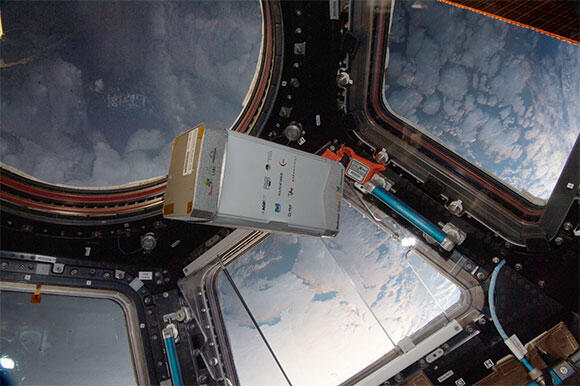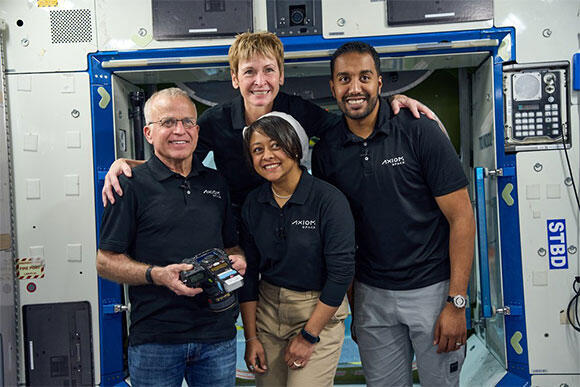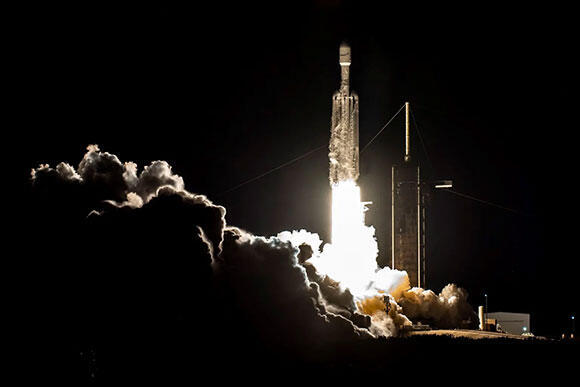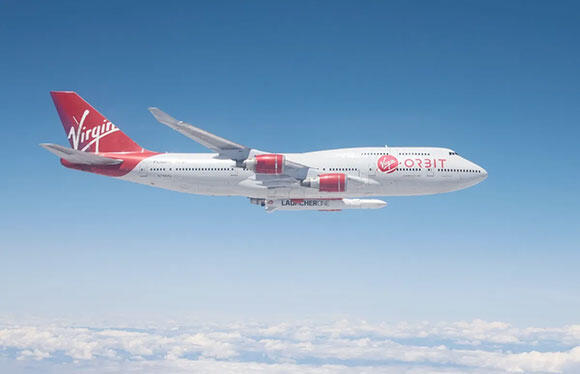Getting your Trinity Audio player ready...
Dipping hummus in the sea of tranquility
A year after the successful experiment of germinating chickpea seeds at the International Space Station during the Rakia mission, Aviv Labs, an Israeli company, has announced the next step.
Read More:
Chickpeas, the main ingredient in the Middle Eastern hummus dip, will be the focus of a similar experiment to be conducted on the Moon's surface. To achieve this, Aviv Labs has signed an agreement with the Japanese company ispace to join its lunar mission in 2025.
4 View gallery


The Moon is the next station, on the way to Mars. The chickpea greenhouse at the International Space Station, upon completion of the experiment during the Rakia mission
(Photo: NASA via Davidson Institute of Science Education)
This was intended to be the Japanese company's third Moon landing; however, less than two weeks ago, its lander crashed during the first landing attempt. The impact of this setback on its ongoing remains unclear, but as of now, ispace is continuing as planned and is working to launch a lander in 2024 and another one in 2025.
According to the plan, Aviv Labs will attach a miniaturized version of the portable greenhouse developed for the Rakia mission to the ispace lunar mission. The greenhouse will contain the growth medium, seeds, monitoring cameras, lighting units, a cooling system to prevent premature germination of the seeds, heating elements, a computerized control system and an image processing system.
All of these components will be compressed into a small greenhouse chamber weighing only half a kilogram - about half the size of the greenhouse chamber sent to the International Space Station, which was roughly the size of a milk carton.
This marks the first attempt to grow food on the Moon, in preparation for future human settlements there. “We chose to continue with the nutritious Israeli superfood – chickpeas, and we hope to grow the chickpea grains on the Moon in 2025," said Yonatan Weintraub, the founder and principal investigator of Aviv Labs, who was also a co-founder of the SpaceIL organization that launched the "Beresheet" missions.
"Such experiments also open up the future possibility of growing food for astronauts and even conducting research in conditions that do not exist on Earth, such as low gravity. Moreover, they are also of great importance for agriculture on Earth, as we develop ways to conserve resources like water and energy.”
Weintraub and his colleagues are not only focusing on the efficient growth of the plant but are also looking for ways to control it using controlled lighting. "For example, if you know that a certain wavelength accelerates the ripening of the plant, you can illuminate the crops with it if an arid period is expected. We have shown that it is possible in principle in the experiment we conducted at the space station," Weintraub explained.
Sending experiments to the Moon is not a cheap matter, but the costs of such activities are already starting to decrease with the entry of private companies into the field.
The total cost of the project, including the development and production of the experimental system and its launch to the Moon, is expected to be around $1.5 million. Funding comes from partners and investors, some of whom participated in the development of the system in the first mission, and others are joining now.
"Growing plants in space, in general, and on the Moon in particular, opens up many opportunities – both for growing food for astronauts and for basic research purposes, as well as for developments that we may not have foreseen," Weintraub concludes. "One day, we will grow chickpeas on Mars as well.”
Saudi astronauts delayed
The launch of the second private mission to the International Space Station, scheduled for next week, has been postponed for an undisclosed reason. The four crew members of Axiom Mission 2, including the first two Saudi representatives to the International Space Station, were supposed to be launched into space on May 8 by SpaceX.
4 View gallery


The AX-2 team during training in the space station simulator, with images from the station similar to those that will be utilized in the Israeli experiment; From right: Al-Qarni, Whitson (behind), Barnawi, and Shoffner
(Photo: Axiom Space via Davidson Institute of Science Education)
Both companies, Axiom and SpaceX, have not provided explanations, but only distributed a brief statement issued by the US Space Agency, NASA, which read: "Axiom Mission 2 No Longer Targeting Early May Launch. NASA, Axiom Space, and SpaceX are working together to identify the best availability opportunity to launch the Axiom Mission 2 to the space station; we are no longer targeting opportunities in early May. More information on the updated target launch date will be shared soon.”
In addition to the two Saudi astronauts, Rayyanah Barnawi and Ali Alqarni, two U.S. astronauts are expected to participate in the mission. The mission commander will be veteran astronaut Peggy Whitson, who was the first woman to command the International Space Station and now heads the manned spaceflight division at Axiom. Another passenger will be racecar driver John Shoffner, who purchased a private ticket to space.
The team is expected to spend 12 days at the International Space Station, conducting experiments and research. One of these is the Israeli experiment ILAN-ES, led by Prof. Yoav Yair from Reichman University, designed to capture sprites and other atmospheric phenomena that occur above clouds during thunderstorms from space.
This is a continuation of the successful experiment conducted by Israeli private astronaut Eytan Stibbe during the Rakia Mission, as part of Ax-1, the first private mission to the space station. Stibbe's experiment was a follow-up to the one conducted by the first Israeli astronaut, Ilan Ramon, on the Columbia space shuttle mission twenty years ago.
The quality of the results in the experiment conducted by Eytan Stibbe during the Ax-1 mission was amazing," Yair told the Davidson Institute website. "It showed that high-quality scientific information can be relatively easily obtained if you know where to look."
Heavyweight satellites
SpaceX successfully launched the Falcon Heavy rocket, with its main payload being a large communication satellite for the American company ViaSat, weighing almost 6.5 tons. This is the first in the series of ViaSat-3 high-speed internet satellites, and it is intended to serve the Americas.
4 View gallery


Third successful launch in six months; This week's Falcon Heavy launch from Kennedy Space Center in Florida
The next satellite is expected to serve Europe and the Middle East, and the third in the series – Asia. These satellite launches were planned to begin in 2019 but were postponed mainly due to difficulties caused by the coronavirus pandemic.
For SpaceX, this was the sixth consecutive successful launch of the heavy-lift launch vehicle, and the third in the last six months. Three additional launches are planned for later this year, with satellites from the U.S. Space Force and the American Communications company, as well as a NASA spacecraft to study the asteroid Psyche.
Such launches typically earn SpaceX between 100 and 150 million, depending on the specific characteristics of the launch and the number of secondary payloads.
Launches and environmental concerns
Regarding SpaceX's heaviest launch vehicle, the Super Heavy, the company is facing serious weight-related issues. Following the first launch test of the giant Starship spacecraft last month, which ended with its explosion along with the rocket, the U.S. Federal Aviation Administration (FAA) has launched an investigation against SpaceX due to the damage caused by the explosion and the damage caused by the launch.
These proceedings may delay the approval for the next Starship launch test for several months. This week, the situation became even more complicated for the company, as five environmental and cultural heritage organizations filed a lawsuit against the FAA, claiming they should not have approved the launch test from the company's South Texas spaceport in the first place.
Four environmental organizations and one cultural heritage organization working to preserve the heritage of local tribes, claim in their lawsuit filed in a Washington court that the FAA should have conducted a detailed survey of the possible environmental impacts before approving the launch from the Boca Chica site.
“The FAA failed to take the requisite hard look at the proposed project and concluded that significant adverse effects will not occur due to purported mitigation measures,” the plaintiffs wrote. "Based on SpaceX's reference, the federal agency settled on using a much less thorough analysis”, enabling SpaceX to launch as soon as possible."
The launch and the explosion caused a fire that burned several square kilometers of brushland, shattered windows in the nearby town, and dispersed particulate matter into the air.
However, no casualties were reported, and an initial examination by environmental organizations did not find any direct damage to wildlife in the wilderness areas around the site. SpaceX owner, Elon Musk, said that to the best of his knowledge, no significant damage was caused to the environment.
As reported by the Davidson Institute website in June 2022, the FAA approved SpaceX to launch the Starship from Boca Chica, provided it complied with a list of environmental requirements but waived the requirement for a comprehensive environmental survey, which could have significantly delayed the launch.
Now, if the court decides there is merit to the allegations, or even if it holds an in-depth hearing on them, the implication could be further lengthy delays in the launch of SpaceX's flagship.
Virgin orbit – the end?
A U.S. federal court has approved the bankruptcy plan of Virgin Orbit, which had planned to launch satellites from airplanes. If concrete proposals for its acquisition are submitted by the mid-month, it will be sold to the highest bidder. If not, the company will be liquidated. In such a scenario, its assets are expected to be sold separately to cover part of the debts it left behind.
4 View gallery


Third successful launch in six months; This week's Falcon Heavy launch from Kennedy Space Center in Florida
(Photo: Virgin Orbit)
The company had developed a service for launching small satellites using a rocket released at high altitude from a Boeing 747 plane. However, its first attempt in January this year ended in failure when the launch rocket crashed along with the nine satellites it carried.
Since then, the company has laid off 675 of its employees, leaving only a skeleton staff of about 100 employees, and filed for bankruptcy in early April.
Content distributed with permission from Davidson Institute of Science Education.

